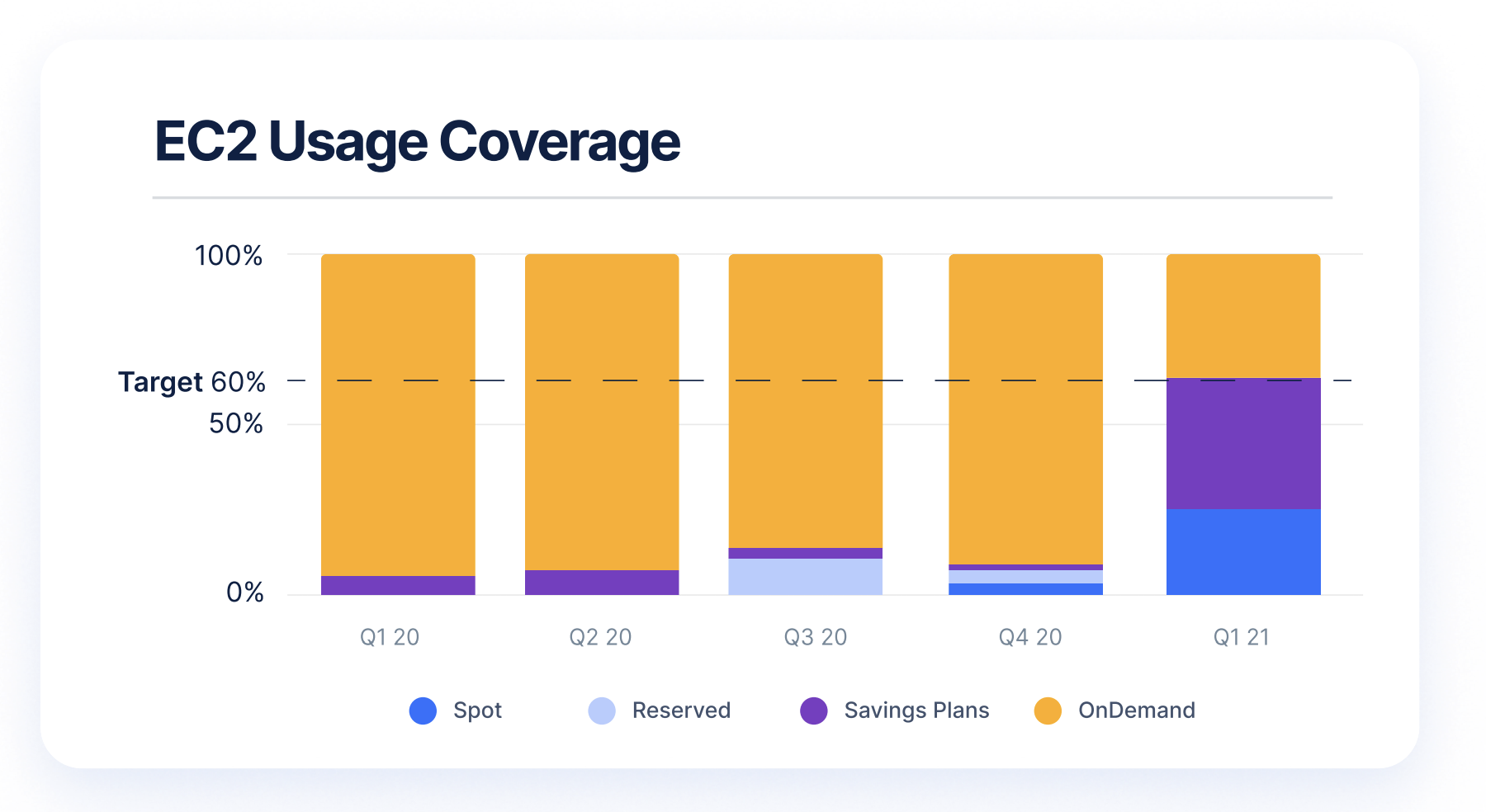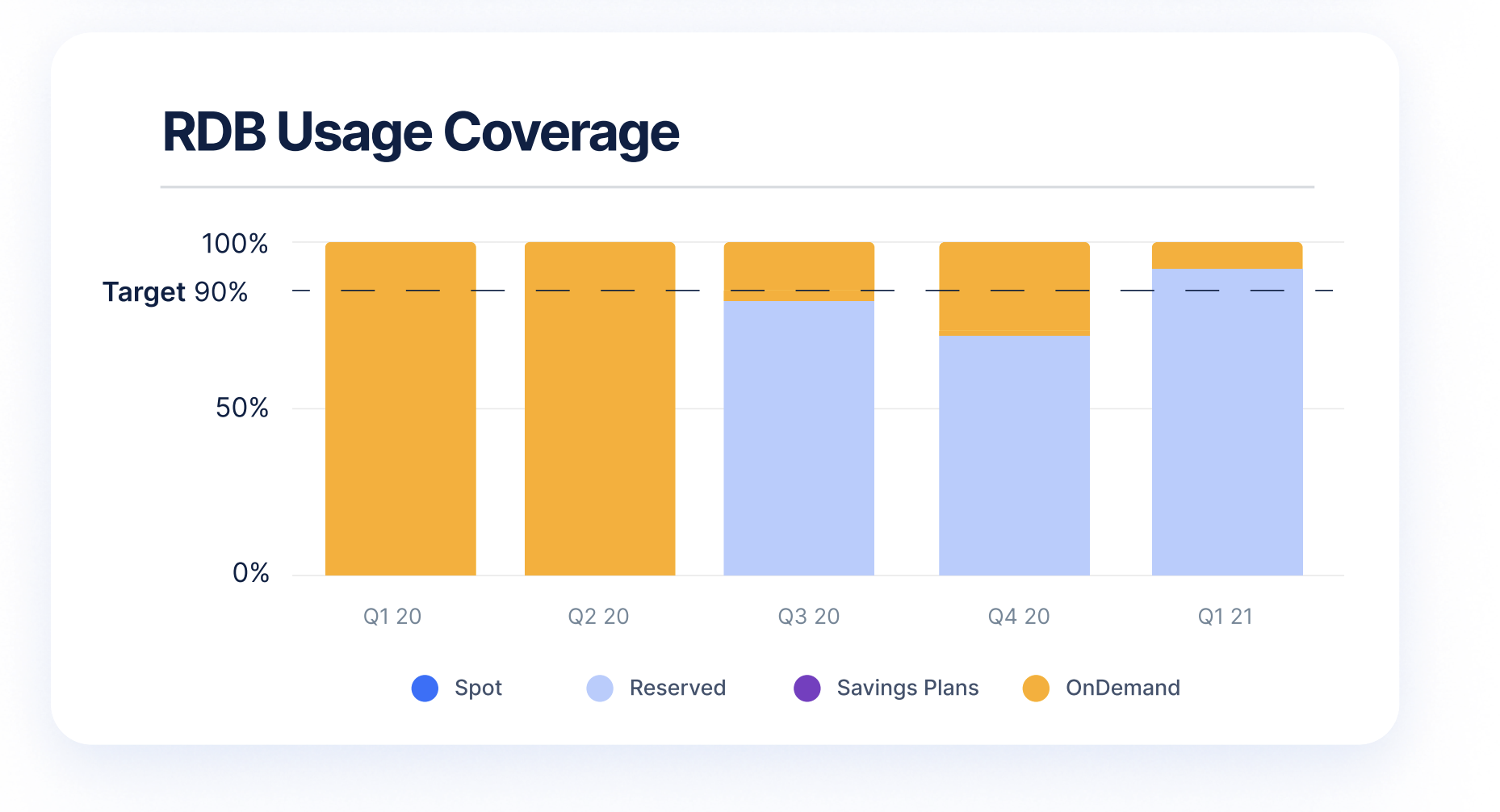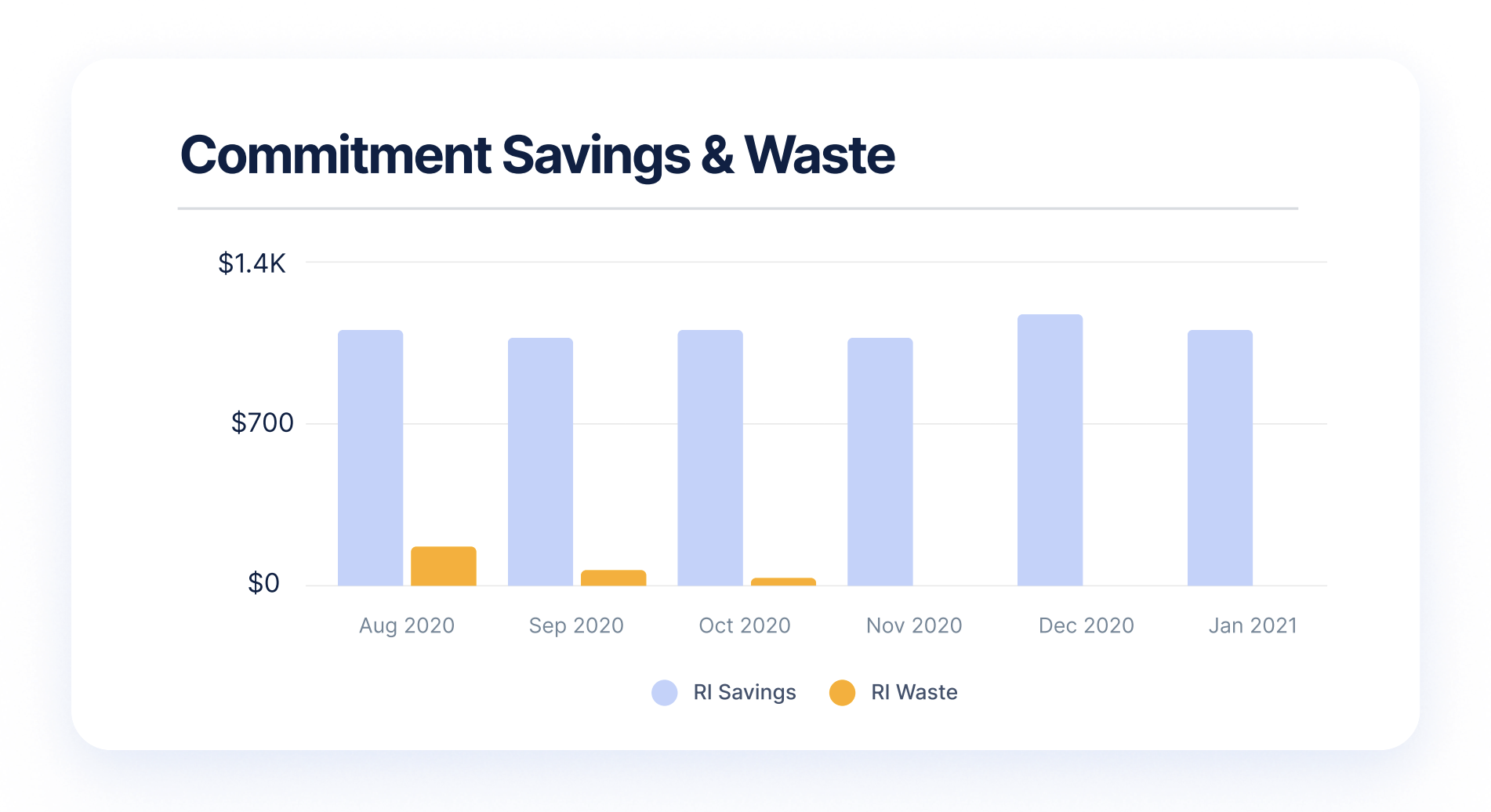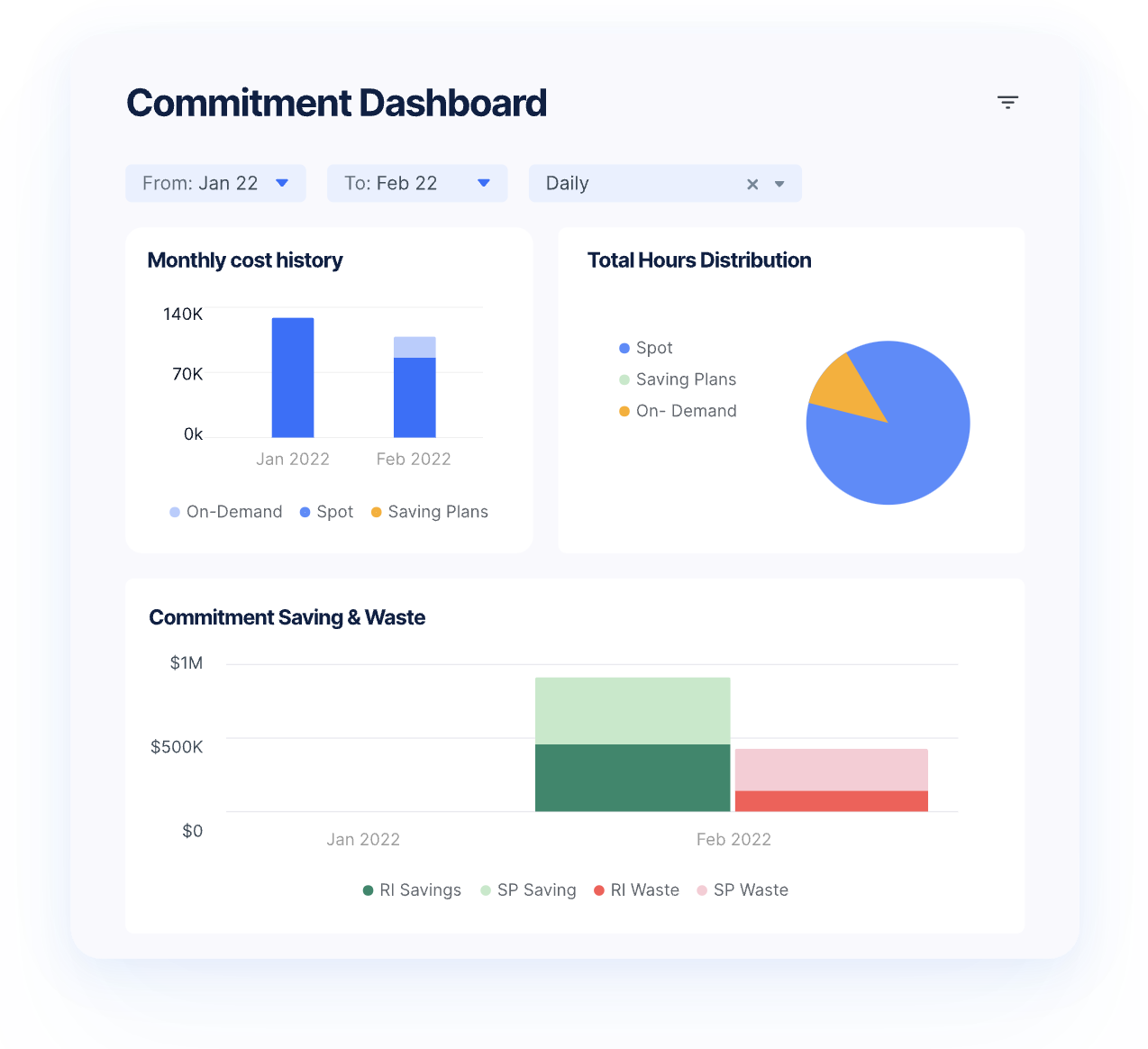One of the key advantages of cloud services versus on premise deployments is the wide range of purchasing options and pricing models. While it’s an attractive advantage, it can be complicated for organizations to determine the best blend of service pricing models.
The ability to define the organization’s blend of purchasing strategies and display the target versus actual performance is critical for optimizing cloud cost management efforts.
There are several KPIs to help you measure FinOps efficiency and ensure you use the commitment capabilities offered by your cloud provider.
Cloud pricing models
All major cloud providers offer several pricing models:
- On-Demand: pay for capacity by the hour or the second depending on which instances you run. No longer-term commitments or upfront payments are needed.
- Reserved Instances (RIs), Committed Use Discounts (CUDs), and Savings Plans (SPs): flexible pricing models that offer discounts if you commit (based on resource usage or spend) over a fixed period.
- Spot Instances: purchase spare AWS capacity for up to 90% off the On-Demand price. The downside is that you receive a 2-minute notification that AWS can take the server back and you’ll need to set up a new one.
On-demand coverage
Using On-Demand is the most expensive option. One of the metrics that users should measure is the percentage of coverage of On-Demand for each service and determine what can be switched to a different method (Spot / Commitment).
Using Spot or workloads that can handle a 2-minute notice before an interruption is a great way to optimize your savings. Generally, they should be stateless applications. It is very common to use Spot on test and development environments.
With stable workloads, the preferred method is to buy a commitment that will help you maximize your discount without any interruptions to your workloads.


Commitment utilization
When it comes to commitments, we want to make sure they’re all being used. This is what is called commitment utilization.
In this KPI, 2 things are being measured:
- How much is saved due to the commitments vs. how much waste there is and the ratio between them?
- The specific percentage of utilization

When considering a commitment, you want to give yourself the most coverage while maintaining elasticity — start with no more than 60%, and as you understand your usage, you can increase it.
Both of these indicators help make sure that not only are you achieving great coverage but that you are also using your commitment and not wasting money, as the target here is to achieve great coverage.
These two KPIs are the first steps in measuring the efficiency of your cloud as well as making sure that you are using the commitment capabilities that the cloud provider offers.
Optimize Purchasing with Umbrella
Umbrella helps companies make smart committed use purchases using personalized recommendations base on historical and forecasted usage.
Umbrella generates savings recommendations by analyzing all incurred usage eligible to be covered by a SP/RI, and uses proprietary algorithms to simulate possible combinations of RIs that would cover that usage.

